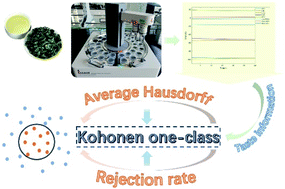A novel Kohonen one-class method for quality control of tea coupled with artificial lipid membrane taste sensors
Abstract
The effective outlier detection method is an important technique in the process of product quality monitoring. In this work, a novel Kohonen one-class model coupled with artificial lipid membrane taste sensors was proposed for tea quality control. Firstly, the taste information of five different grades of Tieguanyin tea was obtained based on the artificial lipid membrane sensors. Secondly, an improved Kohonen model based on the average Hausdorff distance was proposed to enhance the matching degree and transform the multi-class model into a one-class model. Thirdly, a rejection rate was proposed to optimize the domain boundary, which affected the classification performance. Finally, the F1-score was introduced to evaluate the classification performance of the one-class model. The results indicated that the F1-scores for five different grades of Tieguanyin tea were 0.952, 0.947, 0.952, 1 and 0.947, respectively, and an average F1-score of 0.9596 was obtained. This study shows that the novel Kohonen one-class model coupled with the artificial lipid membrane taste sensors can be used as an effective outlier detection method for quality control of tea.



 Please wait while we load your content...
Please wait while we load your content...